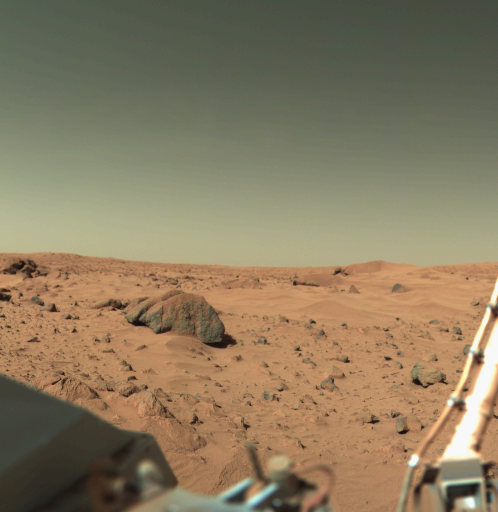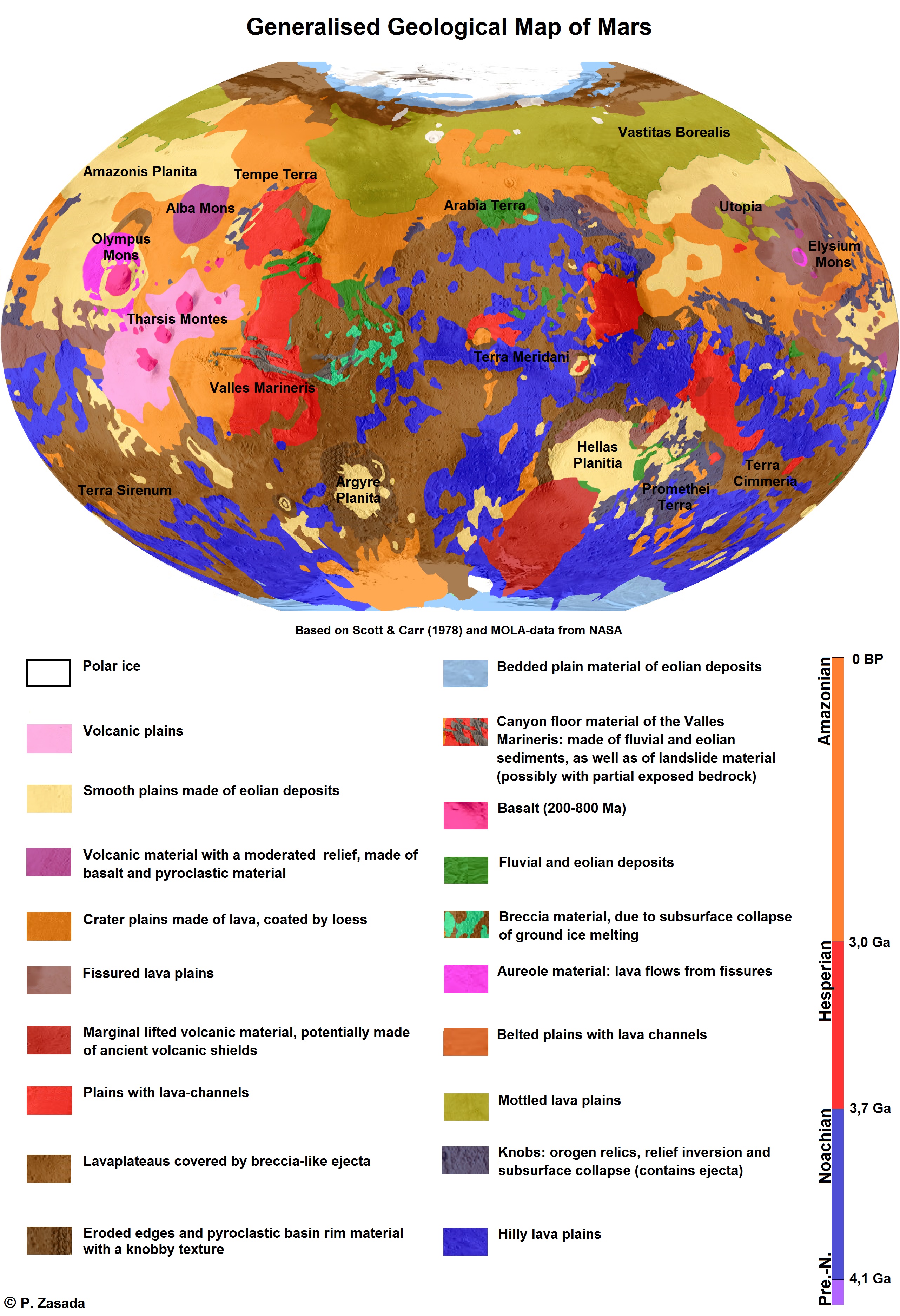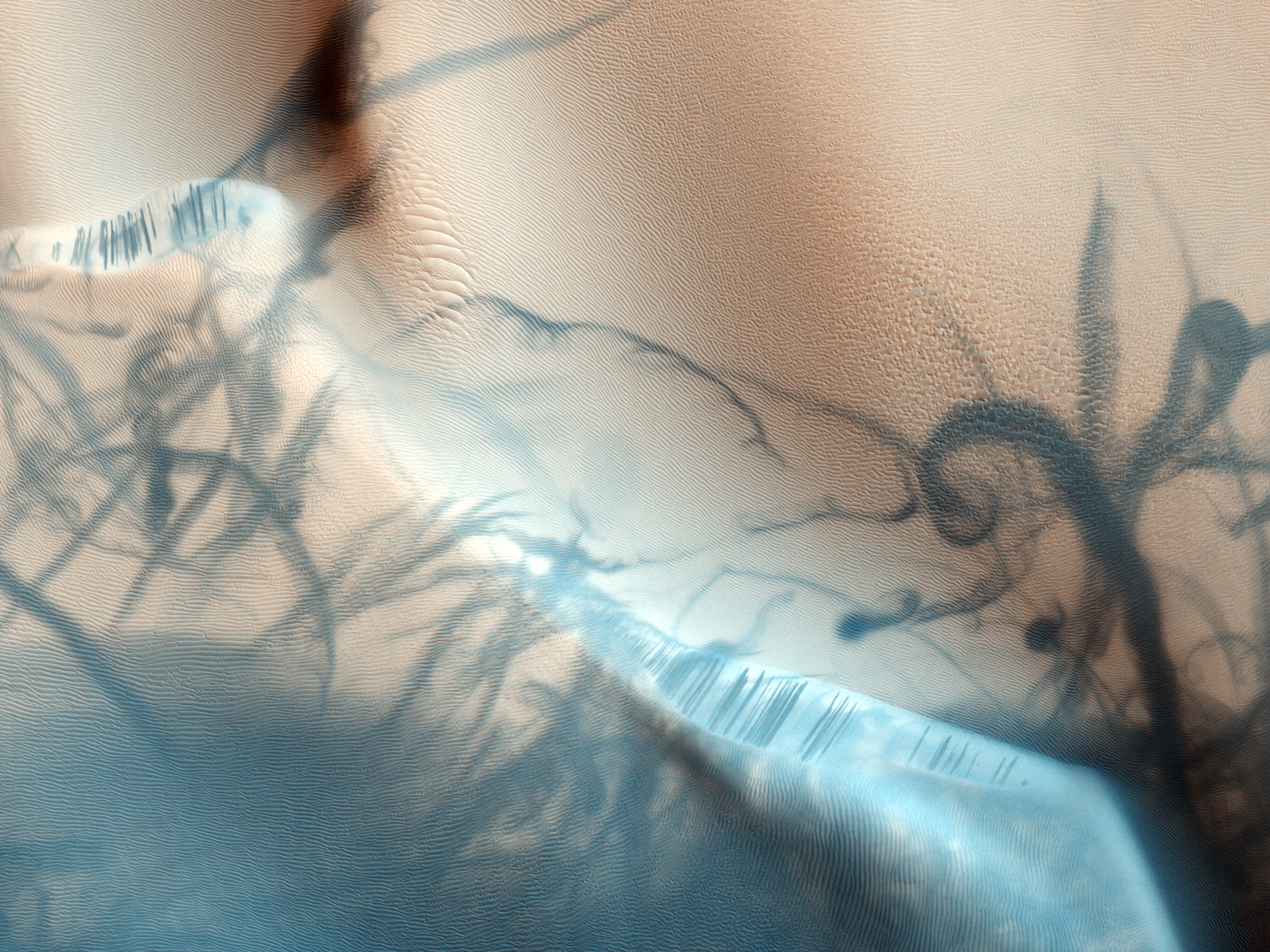|
Vedra Valles
The Vedra Valles are a set of channels in an ancient river valley in the Lunae Palus quadrangle of Mars, located at 19.4° N and 55.6° W. They are 115 km long and were named after an ancient river in Great Britain. Together with other ancient river valleys, they have provided strong evidence for a great deal of running water on the surface of Mars.Moore, P. et al. 1990. The Atlas of the Solar System. Mitchell Beazley Publishers NY, NY. Image:Kasei Valles topolabled.JPG, Area around the Northern Kasei Valles, showing relationships among Bahram Vallis and the Kasei Valles, Vedra Valles, Maumee Valles, and Maja Valles. Map location is in Lunae Palus quadrangle and includes parts of Lunae Planum and Chryse Planitia. Vallesmaumeevedrabox.jpg, Map showing relative positions of several channel systems in the Lunae Palus quadrangle, including the Vedra Valles, Maumee Valles, and Maja Valles. Box indicates their location; colors designate elevation. See also * Geology of ... [...More Info...] [...Related Items...] OR: [Wikipedia] [Google] [Baidu] |
Maumee Valles
The Maumee Valles are a set of channels in an ancient river valley in the Lunae Palus quadrangle of Mars, located at 19.7° N and 53.2° W. They are 350 km long and were named after a North American river in Indiana and Ohio. Together with other ancient river valleys, they have provided strong evidence for a great deal of running water on the surface of Mars.Moore, P. et al. 1990. The Atlas of the Solar System. Mitchell Beazley Publishers NY, NY. Image:Kasei Valles topolabled.JPG, Area around the Northern Kasei Valles, showing relationships among Bahram Vallis and the Kasei Valles, Vedra Valles, Maumee Valles, and Maja Valles. Map location is in Lunae Palus quadrangle and includes parts of Lunae Planum and Chryse Planitia. Vallesmaumeevedrabox.jpg, Map showing relative positions of several channel systems in Lunae Palus quadrangle, including the Vedra Valles, Maumee Valles, and Maja Valles. Box indicates where these valleys can be found. Colors show elevation. See al ... [...More Info...] [...Related Items...] OR: [Wikipedia] [Google] [Baidu] |
Maja Valles
The Maja Valles are a large system of ancient outflow channels in the Lunae Palus quadrangle on Mars. Their location is 12.6° north latitude and 58.3° west longitude. The name is a Nepali word for "Mars". The Maja Valles begin at Juventae Chasma. Parts of the system have been partially buried by thin volcanic debris. The channels end at Chryse Planitia. Huge outflow channels were found in many areas by the Viking Orbiters. They showed that floods of water broke through dams, carved deep valleys, eroded grooves into bedrock, and traveled thousands of kilometers. The Maja Valles show evidence of lava flows in the northern section. Studies with HiRISE and CTX images suggest that the lava flows did not reach the turbulence necessary to erode large channels. So, the Maja Valles are believed to be have formed through water erosion.Keske, A., P. Christensen. 2017. MAJA VALLES: A MULTI-SOURCE FLUVIO-VOLCANIC OUTFLOW CHANNEL SYSTEM. Lunar and Planetary Science XLVIII (2017). 2985p ... [...More Info...] [...Related Items...] OR: [Wikipedia] [Google] [Baidu] |
Lunae Planum
The Lunae Palus quadrangle is one of a series of 30 quadrangle maps of Mars used by the United States Geological Survey (USGS) Astrogeology Research Program. The quadrangle is also referred to as MC-10 (Mars Chart-10). Lunae Planum and parts of Xanthe Terra and Chryse Planitia are found in the Lunae Palus quadrangle. The Lunae Palus quadrangle contains many ancient river valleys. The quadrangle covers the area from 45° to 90° west longitude and 0° to 30° north latitude on Mars. The ''Viking 1'' Lander (part of Viking program) landed in the quadrangle on July 20, 1976, at . It was the first robot spacecraft to successfully land on the Red Planet. Results from ''Viking I'' mission What would it look like walking around the landing site The sky would be a light pink. The dirt would also appear pink. Rocks of many sizes would be spread about. One large rock, named Big Joe, is as big as a banquet table. Some boulders would show erosion due to the wind. There would be ... [...More Info...] [...Related Items...] OR: [Wikipedia] [Google] [Baidu] |
Chryse Planitia
Chryse Planitia (Greek, "''Golden Plain''") is a smooth circular plain in the northern equatorial region of Mars close to the Tharsis region to the west, centered at . Chryse Planitia lies partially in the Lunae Palus quadrangle, partially in the Oxia Palus quadrangle, partially in the Mare Acidalium quadrangle. It is 1600 km or 994 mi in diameter and with a floor 2.5 km below the average planetary surface altitude, and has been suggested to be an ancient buried impact basin, though this is contested. It has several features in common with lunar maria, such as wrinkle ridges. The density of impact craters in the range is close to half the average for lunar maria. Chryse Planitia shows evidence of water erosion in the past, and is the bottom end for many outflow channels from the southern highlands as well as from Valles Marineris and the flanks of the Tharsis bulge. It is one of the lowest regions on Mars ( below the mean surface elevation of Mars), so water woul ... [...More Info...] [...Related Items...] OR: [Wikipedia] [Google] [Baidu] |
Lunae Palus Quadrangle
The Lunae Palus quadrangle is one of a series of 30 quadrangle maps of Mars used by the United States Geological Survey (USGS) Astrogeology Research Program. The quadrangle is also referred to as MC-10 (Mars Chart-10). Lunae Planum and parts of Xanthe Terra and Chryse Planitia are found in the Lunae Palus quadrangle. The Lunae Palus quadrangle contains many ancient river valleys. The quadrangle covers the area from 45° to 90° west longitude and 0° to 30° north latitude on Mars. The '' Viking 1'' Lander (part of Viking program) landed in the quadrangle on July 20, 1976, at . It was the first robot spacecraft to successfully land on the Red Planet. Results from ''Viking I'' mission What would it look like walking around the landing site The sky would be a light pink. The dirt would also appear pink. Rocks of many sizes would be spread about. One large rock, named Big Joe, is as big as a banquet table. Some boulders would show erosion due to the wind. There would ... [...More Info...] [...Related Items...] OR: [Wikipedia] [Google] [Baidu] |
Mars
Mars is the fourth planet from the Sun and the second-smallest planet in the Solar System, only being larger than Mercury. In the English language, Mars is named for the Roman god of war. Mars is a terrestrial planet with a thin atmosphere (less than 1% that of Earth's), and has a crust primarily composed of elements similar to Earth's crust, as well as a core made of iron and nickel. Mars has surface features such as impact craters, valleys, dunes and polar ice caps. It has two small and irregularly shaped moons, Phobos and Deimos. Some of the most notable surface features on Mars include Olympus Mons, the largest volcano and highest known mountain in the Solar System and Valles Marineris, one of the largest canyons in the Solar System. The Borealis basin in the Northern Hemisphere covers approximately 40% of the planet and may be a large impact feature. Days and seasons on Mars are comparable to those of Earth, as the planets have a similar rotation period a ... [...More Info...] [...Related Items...] OR: [Wikipedia] [Google] [Baidu] |
USGS Astrogeology Science Center
The Astrogeology Science Center is the entity within the United States Geological Survey concerned with the study of planetary geology and planetary cartography. It is housed in the Shoemaker Building in Flagstaff, Arizona. The Center was established in 1963 by Eugene Merle Shoemaker to provide lunar geologic mapping and to assist in training astronauts destined for the Moon as part of the Apollo program. Since its inception, the Astrogeology Science Center has participated in processing and analyzing data from various missions to the planetary bodies in the Solar System, assisting in finding potential landing sites for exploration vehicles, mapping our neighboring planets and their moons, and conducting research to better understand the origins, evolutions, and geologic processes operating on these bodies. The Early Days Gene Shoemaker founded the Astrogeology Research Program August 25, 1960. The research program started out as the ''Astrogeologic Studies Group'' at the Uni ... [...More Info...] [...Related Items...] OR: [Wikipedia] [Google] [Baidu] |
Bahram Vallis
Bahram Vallis is an ancient river valley in the Lunae Palus quadrangle of Mars at 20.7° north latitude and 57.5° west longitude. It is about 302 km long and was named after the word for 'Mars' in Persian. Bahram Vallis is located midway between Vedra Valles and lower Kasei Valles. It is basically a single trunk valley, with scalloped walls in some places. The presence of streamlined erosional features on its floor shows that fluid was involved with its formation.Baker, V. 1982. The Channels of Mars. University of Texas Press. Austin Image:Kasei Valles topolabled.JPG, Area around Northern Kasei Valles, showing relationships among Kasei Valles, Bahram Vallis, Vedra Valles, Maumee Valles, and Maja Valles. Map location is in Lunae Palus quadrangle and includes parts of Lunae Planum and Chryse Planitia. Image:Bahram Vallis.JPG, Bahram Vallis, as seen by HiRISE. Rotational landslides (slumps) are visible at the base of north wall. File:ESP 056904 2015valley.jpg, Cl ... [...More Info...] [...Related Items...] OR: [Wikipedia] [Google] [Baidu] |
Kasei Valles
The Kasei Valles are a giant system of canyons in Mare Acidalium and Lunae Palus quadrangles on Mars, centered at 24.6° north latitude and 65.0° west longitude. They are long and were named for the word for "Mars" in Japanese. This is one of the largest outflow channel systems on Mars. Geography This huge system is 300 miles wide in some places. In contrast, Earth's Grand Canyon is only 18 miles wide. It is one of the longest continuous outflow channel systems on Mars. The Kasei Valles system begins in Echus Chasma, near Valles Marineris. It runs initially northward, then turns eastward and appears to empty into Chryse Planitia, not far from where Viking 1 landed. At around 20° north latitude the system splits into two channels, called Kasei Vallis Canyon and North Kasei Channel. These branches recombine at around 63° west longitude, forming a large island between the channels known as Sacra Mensa. Some parts of the Kasei Valles are 2–3 km deep. Like o ... [...More Info...] [...Related Items...] OR: [Wikipedia] [Google] [Baidu] |
Geology Of Mars
The geology of Mars is the scientific study of the surface, crust, and interior of the planet Mars. It emphasizes the composition, structure, history, and physical processes that shape the planet. It is analogous to the field of terrestrial geology. In planetary science, the term ''geology'' is used in its broadest sense to mean the study of the solid parts of planets and moons. The term incorporates aspects of geophysics, geochemistry, mineralogy, geodesy, and cartography. A neologism, areology, from the Greek word ''Arēs'' (Mars), sometimes appears as a synonym for Mars's geology in the popular media and works of science fiction (e.g. Kim Stanley Robinson, Kim Stanley Robinson's Mars trilogy). The term areology is also used by the Areological Society. Geological map of Mars (2014) File:Geologic Map of Mars figure2.pdf, Figure 2 for the geologic map of Mars Global Martian topography and large-scale features Composition of Mars Mars is a terrestrial planet, which ... [...More Info...] [...Related Items...] OR: [Wikipedia] [Google] [Baidu] |
HiRISE
High Resolution Imaging Science Experiment is a camera on board the ''Mars Reconnaissance Orbiter'' which has been orbiting and studying Mars since 2006. The 65 kg (143 lb), US$40 million instrument was built under the direction of the University of Arizona's Lunar and Planetary Laboratory by Ball Aerospace & Technologies Corp. It consists of a 0.5m (19.7 in) aperture reflecting telescope, the largest so far of any deep space mission, which allows it to take pictures of Mars with resolutions of 0.3m/pixel (1ft/pixel), resolving objects below a meter across. HiRISE has imaged Mars exploration rovers on the surface, including the ''Opportunity'' rover and the ongoing ''Curiosity'' mission. History In the late 1980s, of Ball Aerospace & Technologies began planning the kind of high-resolution imaging needed to support sample return and surface exploration of Mars. In early 2001 he teamed up with Alfred McEwen of the University of Arizona to propose such ... [...More Info...] [...Related Items...] OR: [Wikipedia] [Google] [Baidu] |





.jpg)

